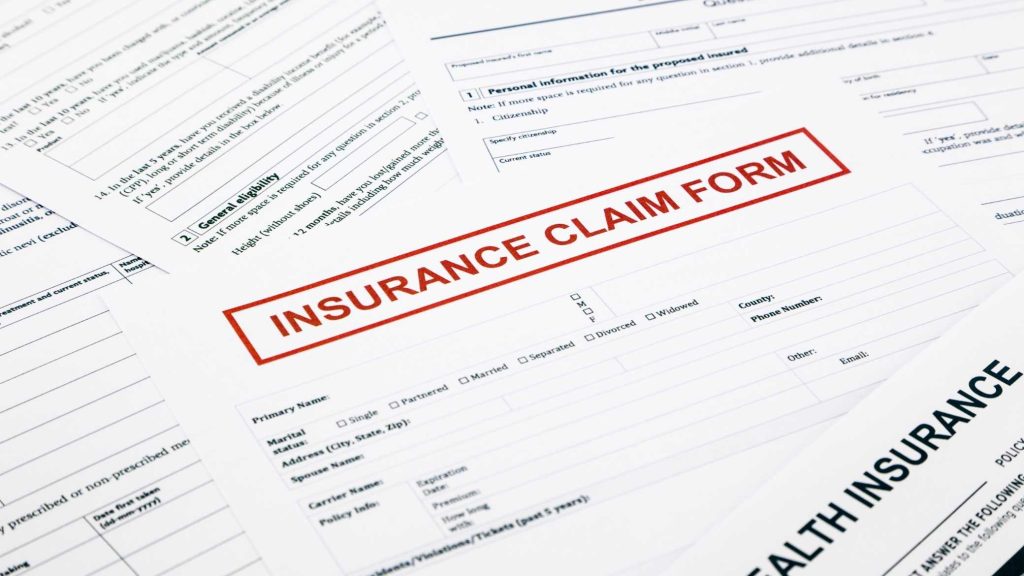How to File a Life Insurance Claim: A Step-by-Step Comprehensive Guide 2025
How to File a Life Insurance Claim : Filing a life insurance claim can be an overwhelming experience, especially during a time of grief after the passing of a loved one. However, knowing how to navigate the process can help ease the burden and ensure that the policy’s beneficiaries receive the financial support they are entitled to.
Table of Contents
This step-by-step guide will walk you through the process of filing a life insurance claim, from understanding the required documentation to receiving the claim payout.
Step 1: Notify the Life Insurance Company

The first step in filing a life insurance claim is to notify the insurance company. After the death of the policyholder, it’s important to contact the life insurance provider as soon as possible.
Also Read : Using a Personal Loan for Home Renovation: A Smart Financial Decision?
The insurance company will guide you through the next steps in the process and inform you of the specific documentation needed.
- Contact the Insurance Company: You can find the customer service contact details on the insurance policy or the company’s website. If you don’t have this information, check with the deceased’s family members, lawyer, or financial advisor to gather the necessary details.
- Provide Initial Information: The insurance company will ask for the policyholder’s name, policy number (if available), and the date of death. This helps them locate the policy in their system.
Step 2: Collect Required Documents
Once you have notified the insurer, the next step is to gather the required documentation to file the claim. Depending on the insurance provider, the exact list of documents may vary, but generally, you’ll need:
- Death Certificate: A certified copy of the deceased’s death certificate is required. This document verifies that the individual has passed away and is the first thing the insurance company will need.
- Policy Documents: If available, you should provide a copy of the life insurance policy. This helps the insurer verify the details of the coverage, such as the amount and beneficiaries.
- Claim Form: The insurance company will provide a life insurance claim form that you must fill out. The form will request details about the policyholder and the beneficiaries.
- Proof of Identity: The beneficiaries may be asked to provide proof of identity, such as a government-issued ID, to verify that they are authorized to make the claim.
- Medical Records (if applicable): In some cases, the insurer may request medical records, particularly if the policyholder passed away under unusual circumstances or if the death was caused by an illness or pre-existing medical condition.
- Beneficiary Proof: If you are not a direct relative or the designated beneficiary, the insurance company may ask for proof of your relationship to the deceased or legal authorization (such as a will or executor’s letter) to file the claim.
Step 3: Submit the Claim Form and Documents

After gathering all the necessary documents, the next step is to submit the claim form and the required documentation to the insurance company. Most insurers accept claims through different channels, including:
- Online Submission: Many insurance companies offer online portals where you can upload the completed claim form and supporting documents.
- Mail Submission: If submitting by mail, make sure to send copies of the documents to the insurer’s claims department. It’s a good idea to use a trackable mailing service to ensure that your documents reach the company securely.
- In-Person Submission: Some insurance companies allow you to submit documents in person, which may expedite the process.
Step 4: Review and Investigation by the Insurance Company
Once the claim is submitted, the insurance company will begin the review process. The insurer will verify the details provided, check if the policy is in force, and assess if the cause of death is covered under the policy. This process can take a few weeks to several months, depending on the complexity of the claim.
- Death Benefit Eligibility: The insurer will confirm that the death benefit is payable. This includes verifying that the policy was active at the time of death and that the cause of death does not fall under any exclusions, such as suicide during the first two years of coverage (if applicable).
- Investigation: If the cause of death is suspicious or if the policyholder had a history of risky activities (such as extreme sports or hazardous jobs), the insurance company may conduct an investigation. This may involve collecting additional information from the deceased’s healthcare providers or reviewing medical records.
Step 5: Receiving the Payout
Once the insurance company has completed its investigation and confirmed that the claim is valid, the next step is to receive the death benefit payout. The payout process may vary depending on the type of policy (such as term life or whole life insurance) and the terms set forth in the policy.
- Lump-Sum Payment: Most life insurance policies provide a lump sum payment to the beneficiaries. This amount is typically tax-free, although there may be exceptions.
- Installments: In some cases, beneficiaries may receive the death benefit in installments over time. This can happen if the policy includes an option for payouts in the form of annuities or if the beneficiary chooses to receive the payment in this manner.
Step 6: Resolving Any Issues or Delays
In some instances, there may be issues or delays in processing the claim. If you encounter difficulties, it’s important to stay in touch with the insurance company and seek clarification on the status of the claim. Common issues include:
- Missing or Incomplete Documents: If the insurer finds that any required documents are missing or incomplete, they will request them. Make sure you respond promptly to avoid delays.
- Disputes over the Beneficiary: If there is a dispute over the beneficiary (for example, if the deceased did not update their beneficiary designation), it may cause a delay in processing the claim.
- Policy Exclusions: If the insurer denies the claim due to policy exclusions (such as suicide within the first two years or death from a non-covered cause), you may have the option to appeal the decision.
How to File a Life Insurance Claim – Conclusion :

Filing a life insurance claim can be an emotional and stressful process, but by following these steps, you can navigate the process more effectively.
Buy Now : News & Magazine Website AI Automated
Always ensure that you have the necessary documentation and contact the insurance company as soon as possible after the death of the policyholder. By staying organized, patient, and proactive, you can ensure that the beneficiaries receive the financial support they are entitled to during this difficult time.
Keywords : How to File a Life Insurance Claim – How to File a Life Insurance Claim 2025 , How to File a Life Insurance Claim Now



